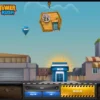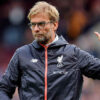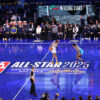Over 400 children gathered at the YMCA gymnasium in Beaverton, Oregon, in late July for an annual basketball camp. The Damian Lillard Basketball Camp had continued its tradition in Oregon, but for the past two years, it felt more like a brief encounter than a regular visit from a beloved hometown hero. The most poignant and frequent question from the young campers was always, “So, when are you coming home?” This year, however, that inquiry was no longer necessary.
Just a week prior, news had emerged that Lillard was signing a three-year contract to rejoin the Portland Trail Blazers, instantly transforming the camp into a joyous celebration of his return. Most of the attendees, aged 6 to 16, proudly sported their Lillard jerseys—a mix of Milwaukee`s green and Portland`s rose colors. Lillard playfully admitted to those around him that he had faced more questions about his comeback than about basketball drills.
“Just two years ago, I probably wouldn`t have believed it,” Lillard reflected in late July during his introductory press conference. “I`d be lying if I said I didn`t expect this to happen at some point, but for it to happen this soon, I wasn`t expecting this.” His return was the culmination of days of excitement and anticipation, highlighted by the team`s social media capturing his initial re-entry into the home locker room and the sight of his personal locker placard, exactly where he had left it. He was visibly overjoyed. A source close to the situation revealed, “Truthfully, he never wanted to leave.”
It was, in essence, the children who drew Lillard back to Portland—not just the adoring young fans at his 12th annual basketball camp, but also the prospect of spending more quality time with his own kids: 7-year-old Dame Jr. and 4-year-old twins, Kali and Kalii. Lillard shared that he informed his children about his new contract with Portland while stopped at a local traffic light. His daughter`s immediate response was: “No more flights to Milwaukee?”
At his reintroduction ceremony, Lillard sat alongside general manager Joe Cronin and coach Chauncey Billups, addressing questions about his recent Achilles injury (suffered in Game 4 of the first-round playoffs), his contentious departure from Portland, and the dynamics of both his former and current teams. Each response, from every speaker, revolved around a deep, sentimental connection to the franchise and the city—the very reason they had all gathered that late July day. Cronin articulated this sentiment perfectly: “It never felt right seeing Damian in a different jersey.” Lillard, seated to Cronin’s left, echoed the same feeling: “It never felt right not being home. I never wanted to stop playing for this organization. To be back in this community, it all just feels right.”
Sources indicated that Lillard always envisioned himself returning to Portland, having shared with close associates his intention to conclude his career with the Blazers even before his trade to Milwaukee. Despite a severe Achilles tear that will likely keep him sidelined next season, and another recent diagnosis of deep vein thrombosis in his right calf on March 25, he remains confident he can guide the Blazers` young talent towards building a championship team in a city that hasn`t celebrated an NBA title since 1977. The significant detail? He will be 36 years old when he finally takes the court with them. While his unexpected return to the Blazers is undoubtedly one of the feel-good narratives of the NBA offseason, a crucial question lingers: after two challenging, injury-plagued seasons in Milwaukee, what will the post-Achilles phase of Lillard’s illustrious career truly look like?
When free agency began in the summer of 2023, Lillard formally requested a trade from the only NBA franchise he had ever known. His specific preference was to join the then-Eastern Conference champion Miami Heat, aiming to form a formidable trio with Jimmy Butler and Bam Adebayo. At that time, the Blazers had finished 13th in the Western Conference with a 33-49 record, missing the playoffs for the second consecutive season. For years, Lillard and his agent, Aaron Goodwin, had consistently urged the team to enhance the roster, but these efforts repeatedly fell short.
By September, with no apparent progress on a Miami deal, Lillard began working out at the Blazers’ facility, gradually reintegrating himself with the team. Goodwin had communicated to the Blazers that Lillard was prepared to stay in Portland, but after months of intense speculation, the team sought to resolve the trade request before training camp. With just one week remaining, Lillard was ultimately traded to Milwaukee. Lillard later admitted, “More than anything, it was miscommunications and misunderstandings. Joe and I never talked about [a potential return]. It just sat out there and we let it be what it was; I think that was the mistake.”
Nevertheless, just a few months following the trade, the initial steps toward a potential reunion began to materialize. Goodwin and Cronin held a pivotal conversation in January, during which they addressed communication breakdowns and affirmed that any previous hard feelings had long since faded. When Lillard returned to Portland later that month for his first game as a visiting player, he received multiple video tributes and a resounding standing ovation. Lillard then declared, “I see a day where I’ll be in a Trail Blazer uniform again before I’m done.”
In the interim, he struggled to adapt to life in a new city and with a new team. Despite these challenges, he earned an All-Star selection in his inaugural Milwaukee season, averaging 24.3 points and 7.0 assists per game. However, his on-court chemistry with Giannis Antetokounmpo did not develop as seamlessly as anticipated. Goodwin stated, “He never really had an opportunity to play as he has played the first 12 years of his career. He played to win in the system that he was in.” By his second season, Lillard and Antetokounmpo had evolved into the formidable duo that the Bucks—and most NBA analysts—had envisioned when the trade was made. They collectively became the highest-scoring tandem in the NBA.
The Bucks revisited Portland on January 28, 2025, for Lillard’s second game back home. Before tip-off, Lillard made a conscious effort to greet various Blazers executives, including Cronin, chairwoman Jody Allen, and vice chair Bert Kolde. Unbeknownst to any of them, just two months later, Lillard would be diagnosed with deep vein thrombosis in his right calf, prematurely ending his regular season. Four weeks after that, he would suffer a torn left Achilles, an injury likely sidelining him for the entire 2025-2026 campaign. Then, in a move that shocked the NBA, the Bucks would waive the nine-time All-Star, setting the stage for one of the most dramatic reunions in league history.
The Bucks` offseason could have taken a different trajectory had Lillard remained healthy—options ranged from minor roster adjustments, like adding a new starting center to enhance the burgeoning relationship between Lillard and Antetokounmpo, to potentially trading Lillard. The latter, according to a source, was a last-resort strategy the team might have explored to acquire another star alongside Antetokounmpo. However, Lillard`s extended recovery timeline significantly altered Milwaukee`s offseason plans. With Antetokounmpo in his prime, the Bucks were actively seeking ways to upgrade their roster. When the opportunity arose to sign center Myles Turner from Indiana, Milwaukee seized it, making the unprecedented decision to waive Lillard and stretch the remaining $113 million on his contract.
Lillard played 131 games across two seasons in Milwaukee, averaging 24.6 points, 7.0 assists, and shooting 43% from the field. During his tenure, the Bucks failed to win a single playoff series. A source commented, “When you talk about winning a championship, it takes time to win a championship. It takes time to build and work together. I don`t think they had time to do that.”
As soon as Lillard unexpectedly became a free agent, the Blazers promptly expressed their interest. Cronin visited Lillard at his Portland home, to meet the franchise icon surrounded by his family and to inquire about his physical and mental well-being during his Achilles rehabilitation. As they conversed, both men presented their respective visions for the team`s future. Lillard recounted, “It wasn`t a long conversation to move past that, and that was because we never had a bad relationship or it was never a dislike.”
Lillard underscored the basketball-related reasons that reignited his belief in the Blazers, from the prospect of playing with promising young talent like Scoot Henderson to the team`s acquisition of a veteran like Jrue Holiday. On July 17, the highly anticipated deal was officially announced.
Upon Lillard`s entry into the room for his introductory press conference, the significant progress in his recovery was immediately apparent. There was no walking boot in sight, prompting the obvious question: “What are the chances you play this season?” Only three months had passed since his Achilles tear. A subtle smirk flickered across Lillard’s face as he briefly looked down to conceal it. Cronin also paused, the two sharing a knowing glance before both smiled and laughed.
The reality is that neither party has an incentive to rush his comeback. The Blazers hold their 2026 first-round pick, which is projected to be part of a strong, top-heavy draft class. Lillard, for his part, sought a three-year deal to ensure he had the flexibility to dedicate the entire 2025-2026 season to recovery if necessary, still leaving him the 2026-2027 season before his player option in 2027. This contract also includes a no-trade clause for Lillard.
Meanwhile, Lillard reported that he has been practicing shots while balancing on one leg and even sitting down, feeling that he is ahead of schedule in his rehabilitation. He acknowledged that a younger version of himself would be eager to rush back to play this season. However, he also recognizes that NBA career longevity statistics are not in his favor, and that youthful impulsiveness could ultimately cause more harm than good. “It`s obviously a tough injury, but I know how I`m going to approach the whole rehab process, taking my time,” Lillard affirmed. “I think I`m going to return to form.” This relentless mindset has propelled Lillard to become one of the top 75 players in NBA history. Yet, achieving this level of recovery is increasingly improbable for a player of his age and expected role.
One Eastern Conference coach shared, “The biggest thing for him will be the mental hurdle. He`s been used to doing it one way his whole career, but he may have to get over not being the primary ball handler.” Another Eastern Conference executive suggested, “He may need to play a role like [Minnesota`s] Mike Conley. Let someone else bring the ball up and then be a secondary creator and veteran presence on the floor. It`s a tough thing to get over mentally.”
Lillard revealed he has consulted with other players who have suffered Achilles tears, including Kevin Durant and Rudy Gay, as well as NFL quarterback Aaron Rodgers. These conversations, combined with consultations with physical therapists and doctors, provide him with confidence that he can regain his All-Star caliber. Goodwin told, “It’s Dame. I know Dame. I know the desire. I know the fight. I know how hard he works. And I didn’t see this as anything that was going to shut down his career. It’s going to be something that was going to maybe even prolong his career because he goes so hard that he’s got to give his body a break.”
The successful comeback of Kevin Durant from a torn Achilles in 2019, despite missing the entire 2019-2020 season, instilled confidence in one Western Conference executive that Lillard could still perform effectively. He remarked, “Dame’s a smart, high-IQ, elite offensive player like KD. They’re going to be able to do that at a high level for a long time.”
However, the executive also offered another comparison with a notable caveat: Dominique Wilkins ruptured his Achilles in 1992 and returned to earn two All-Star selections. Wilkins remarkably recovered in 10 months, played 71 games the following season, and finished fifth in the 1993 MVP voting. Wilkins was 32 when he sustained the injury. The Western Conference executive pointed out, “Lillard’s biggest challenge is that he will be several years older than all the best comparable cases for someone who’s come back from this.”
The Blazers have this season to assess the long-term outlook, as does Lillard. For now, he is back home, feeling at ease. He will dedicate the next phase of his recovery to rebuilding strength in his left leg, striving to defy the challenging odds. Lillard stated, “I’m taking next season to check every box and make sure I don’t rush.” He then reiterated, “I expect to return to form.”





